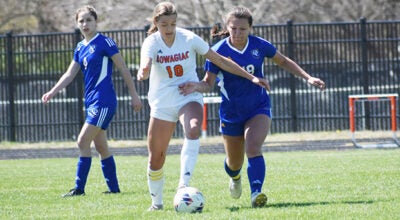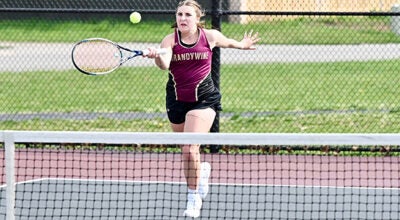New transfer rule draws mixed reaction
Published 8:15 am Wednesday, May 23, 2018
DOWAGIAC — Not all area athletic directors are confident that the new transfer rule adopted by the Michigan High School Athletic Association will fix the current problems.
But most agree that it is a step in the right direction.
At its spring meeting of the representative council in Gaylord May 6-7, the MHSAA passed a major revision to the transfer rule, which has come under much scrutiny recently, and was almost tested in the courts by a Clarkston basketball player.
The 19-member legislative body of the MHSAA considered 29 committee proposals at its spring meeting, which is usually the busiest of the year.
The one that most people had their eyes on was a change to the transfer regulation, which will go into effect beginning with the 2019-20 school year.
The new regulation will be based on the student-athlete’s sports participation during the 2018-19 school year.
The new regulation states that transferring student-athletes are ineligible for one year in any sport played during the previous school year, unless it fits into one of 15 current exceptions.
Then the student-athlete would be immediately eligible to participate in athletics.
The new rule would allow them to participate immediately in any sport that the student did not take part in the previous year.
“We are hopeful this ‘sport-specific’ transfer rule will be easier to understand, and therefore, more consistently enforced,” said MHSAA Executive Director John E. “Jack” Roberts.
“This rule better addresses the changing landscape of transfers, hopefully dissuading those considering moving for athletic reasons while still allowing a full range of sports for those who do switch. It may seem like a punishment to some, but the new rule is actually more permissive for many transfer students, and we saw growing support for these changes from our schools since we began discussing this proposal a year ago.”
Jeff Upton, Niles’ athletic director, says that many parents are confused by the rule.
“Michigan is a school of choice state, but that is for academic purposes and not athletic purposes,” he said. “This is misunderstood by families. Many believe athletics is school of choice, and that is what MHSAA is trying to prevent by this rule change.”
The change helps clarify the situation, according to Upton.
“If you play a sport at one school, even just for a couple of weeks, then transfer to a new school, you will not be able to play that sport for the rest of the current season, and you won’t be able to play that sport the next year either,” he said. “This rule prevents someone switching schools because their child didn’t make the cut at another school.”
Brandywine athletic director Vance Stratton believes the new rule will keep athletes from changing schools constantly.
“The rule is designed to address what was a growing trend in athletes jumping from one school to another just for athletic purposes,” he said. “It doesn’t penalize those athletes that move in to your district, just those that jump schools for athletic reasons through school of choice. The intent is to slow down that trend.”
Dowagiac’s Brent Nate does not see things changing much from the current situation.
“I personally don’t see the new rule changing the landscape of athletics all that much,” he said. “A majority of transfers still fit the 15 exceptions and the athlete will still be deemed eligible to participate.”
Edwardsburg’s Kevin Dean would like the MHSAA to consider changing the rule even more.
He sees the new regulation more schools in larger cities, but also likes the change.
“I think it is potentially a good thing, but it is mostly for the bigger cities where kids tend to jump schools more to play for a specific coach or program,” he said. “The positive of it is that in the past a kid would be unable to play any sports so now at least they could get involved with something immediately.”
And what would he like to see changed?
“I would still like to see a change made where students who are freshmen or sophomore and would be on sub-varsity teams would be eligible to play at that level no matter what the circumstance of their transfer is,” Dean said.
According to the MHSAA, the changes to the transfer rule were supported by the vast majority of its member schools based on surveys that were turned in prior to the council’s vote.







